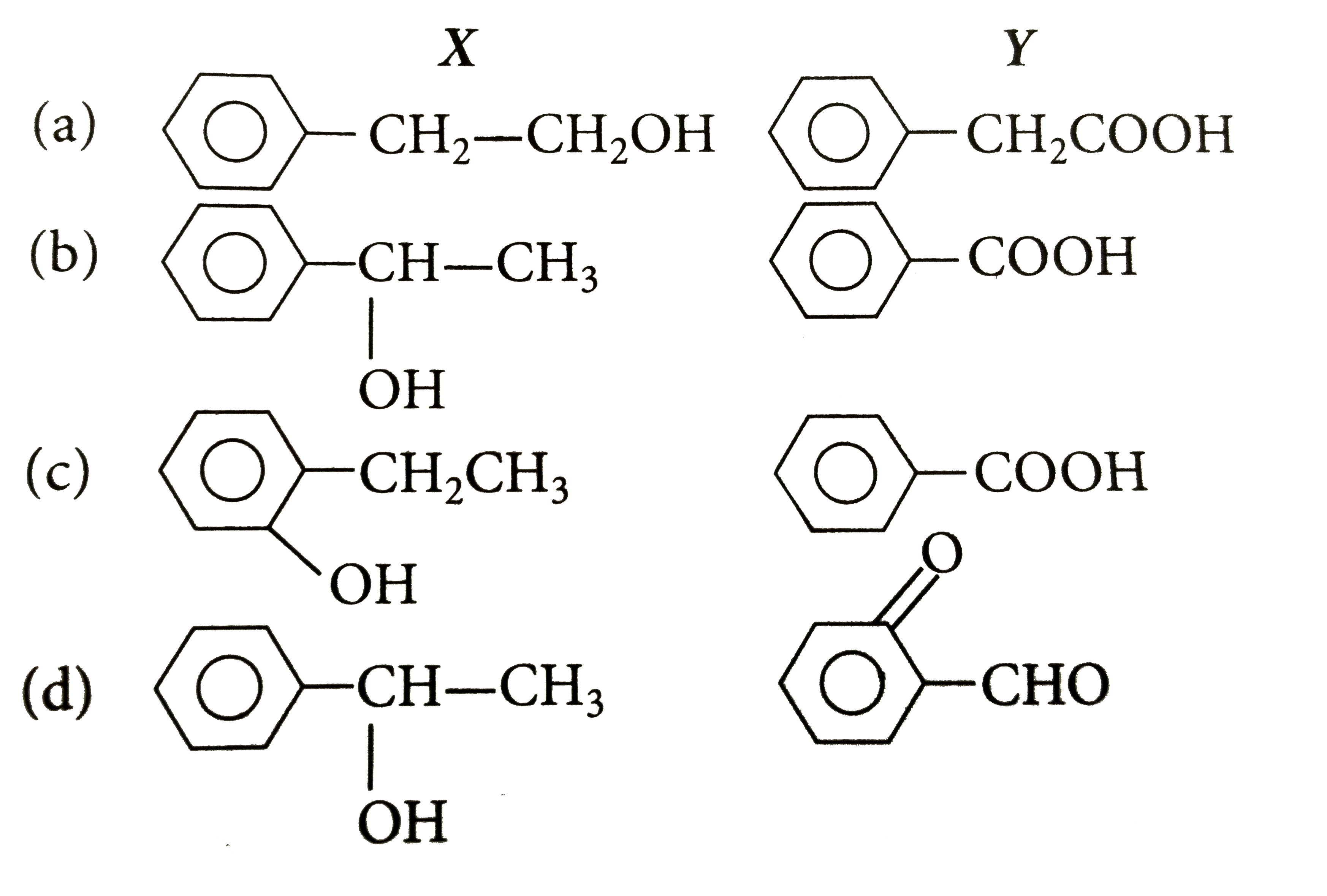Complete Solutions to Exercise Archives (Subjective) of chapter REDUCTION AND OXIDATION REACTION OF ORGANIC COMPOUNDS of Class 12 book with complete answers and questions
| Class 12 | CHEMISTRY |
| Chapter | REDUCTION AND OXIDATION REACTION OF ORGANIC COMPOUNDS |
| CENGAGE CHEMISTRY | Exercise Archives (Subjective) |
| Number Of Questions | 26 |
| Academic Year | 2023-24 |
The reagent with which both acetaldehyde and acetone react easily, is `:`
02:13View SolutionA compound that gives a positive iodofrm test is `:`
03:02View SolutionWhen acetaldehyde is heated with Fehling's solution, it given a precipitate of `:`
01:42View SolutionThe compound that will not give iodoform on treatment with alkali and iodine is :
04:42View SolutionWhich of the following compounds is oxidised to prepare methyl ethyl ketone ?
02:33View SolutionHydrogenation of benzoyl chloride in the presence of Pd on `BaSO_4` gives
01:26View SolutionThe appropriate reagent for the following transformation is
 03:27View Solution
03:27View SolutionWhich one of the following will most readily be dehydrated in acidic condition?
03:54View Solution1-Propanol and 2- propanol can be distinguished by:
03:14View SolutionCompound (X) with molecular formula `C_(3)H_(8)O` is treated with acidified potassium dichromate to form a product (Y) with molecular formula `C_(3)H_(6)O`. (Y) does not form a shining silver mirror on warming with ammoniacal `AgNO_(3)`. (Y) when treated with an aqueous solution of `NH_(2)CONHNH_(2).HCl` and sodium acetate, gives a product (Z). The structure of (Z) is
05:06View Solution`PhC-=CMeoverset(Hg^(2+)+H^(o+))to(A).
The compound `(A)` is:02:42View SolutionThe products of acid hydrolysis of P and Q can be distinguished by
 04:22View Solution
04:22View SolutionHow will you convert butan -2-one to propanoic acid ?
02:58View SolutionWhich of the following compound will give a yellow precipitate with iodine and alkali?
05:17View SolutionUnder Wolff-Kishner reduction conditions, the conversion which may be brought about is:
03:31View SolutionFehling's solution 'A' consists of an aqueous solution of copper sulphate, while Fehling's solution 'B' consists of an alkaline solution ……………..
02:01View SolutionThe yield of ketone is oxidised is more than the yield of aldeyde when a primary alcohol is oxidised.
02:37View SolutionStatement-1: Acetic acid does not undergo haloform test.
and
Statement-2: Acetic acid does not contain any `alpha`- hydrogen.04:21View SolutionGive a chemical test to distinguish between methanol and ethanol.
01:52View SolutionAnswer the following with suitable equation wherever necessary `:`
Suggest a reagent to distinguish acetaldehyde from acetone.05:00View SolutionA ketone [A] which undergoes haloform reactions gives compound [B] on reduction. [B] on heating with sulphuric acid gives compound [C] which forms monozonide [D}. On hydrolysis in the presence on zinc dust gives acetaldehyde. Identify [A], [B] , [C] and [D]. Write the down the reactions. Involved.
05:06View SolutionGive reasons:
iodoform is obtained by the reaction of acetone with hypoiodite but not with iodide ion.04:28View SolutionWhen `t`-butanol and `n`-butanol are separately treated with a few drops of dilute `KMnO_(4)` in one case only, the purple colour disappears and brown precipitate is formed. Which of the two alcohols gives the above reaction and which is the brown precipitate?
03:14View SolutionA compund `X(C_8H_10O)` upon treatment with alkaline solution of iodine gives a yellow precipitate. The filtrate on acidifiction gives a whit solid `Y(C_7H_6O_2)` Write the strctures of X and Y.
 05:25View Solution
05:25View SolutionIdentify `(A), (B)`, and `(C )` and give their strucyures.
 04:48View Solution
04:48View SolutionAn alkene `(A) C_(16)H_(16)` on ozonolysis gives only one product `(B) (C_(8)H_(8)O)`. Compound `(B)` on reaction with `NaOH//I_(2)` yields sodium benzoate. Compound `(B)` reacts with `KOH//NH_(2)` yielding a hydrocarbon `(C_(8)H_(10))`. Write the structures of compounds `(B)` and `(C )`. Based on this information, two isomeric structures can be proposed for alkene `(A)`. write thair structures and identify the isomer which on catalytic hydrogenation `(H_(2)+Pd+C)` gives a recemic mixture.
View Solution
Exercise Archives (Subjective) questions and complete solutions for chapter REDUCTION AND OXIDATION REACTION OF ORGANIC COMPOUNDS of CENGAGE CHEMISTRY (ENGLISH) of Class 12
